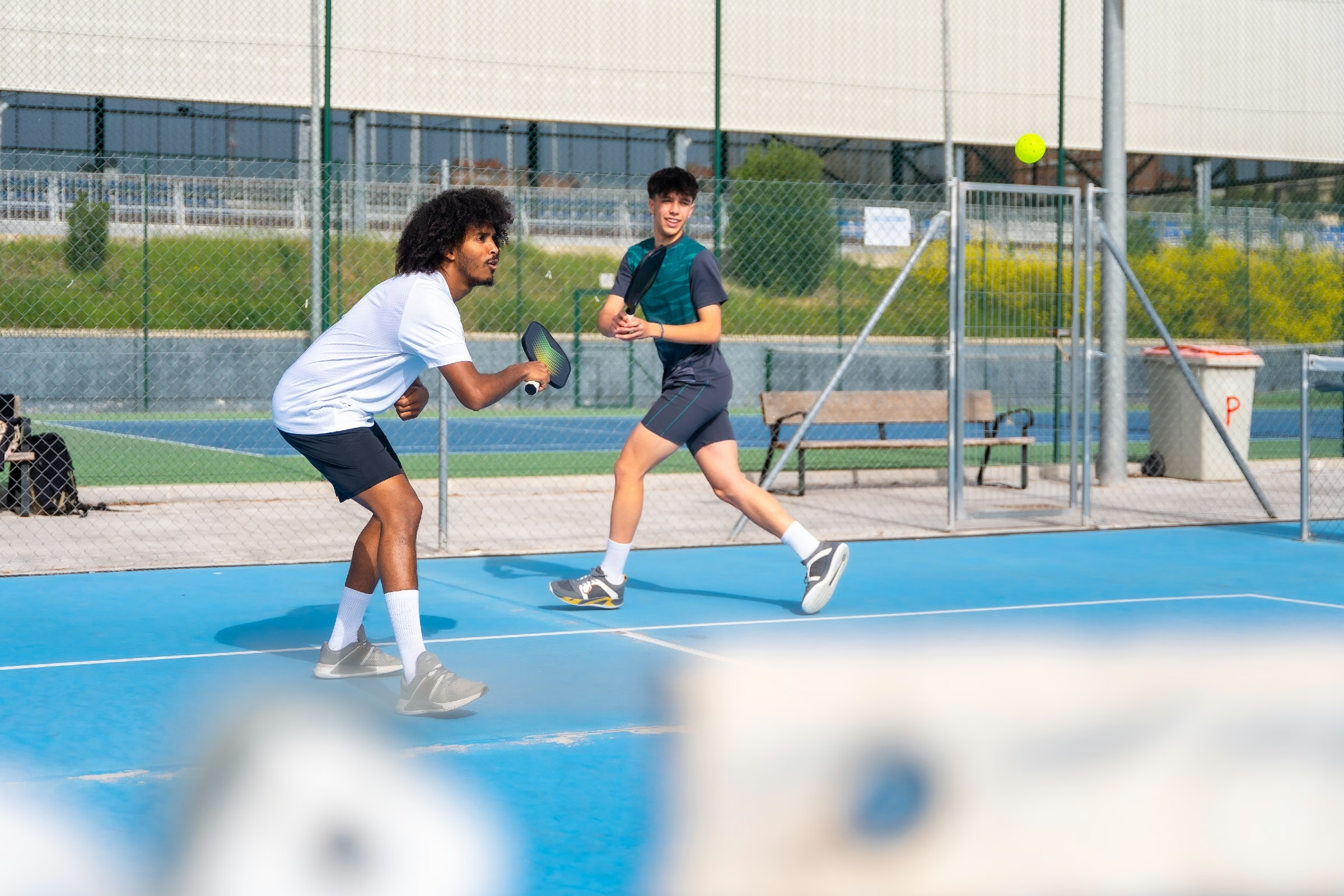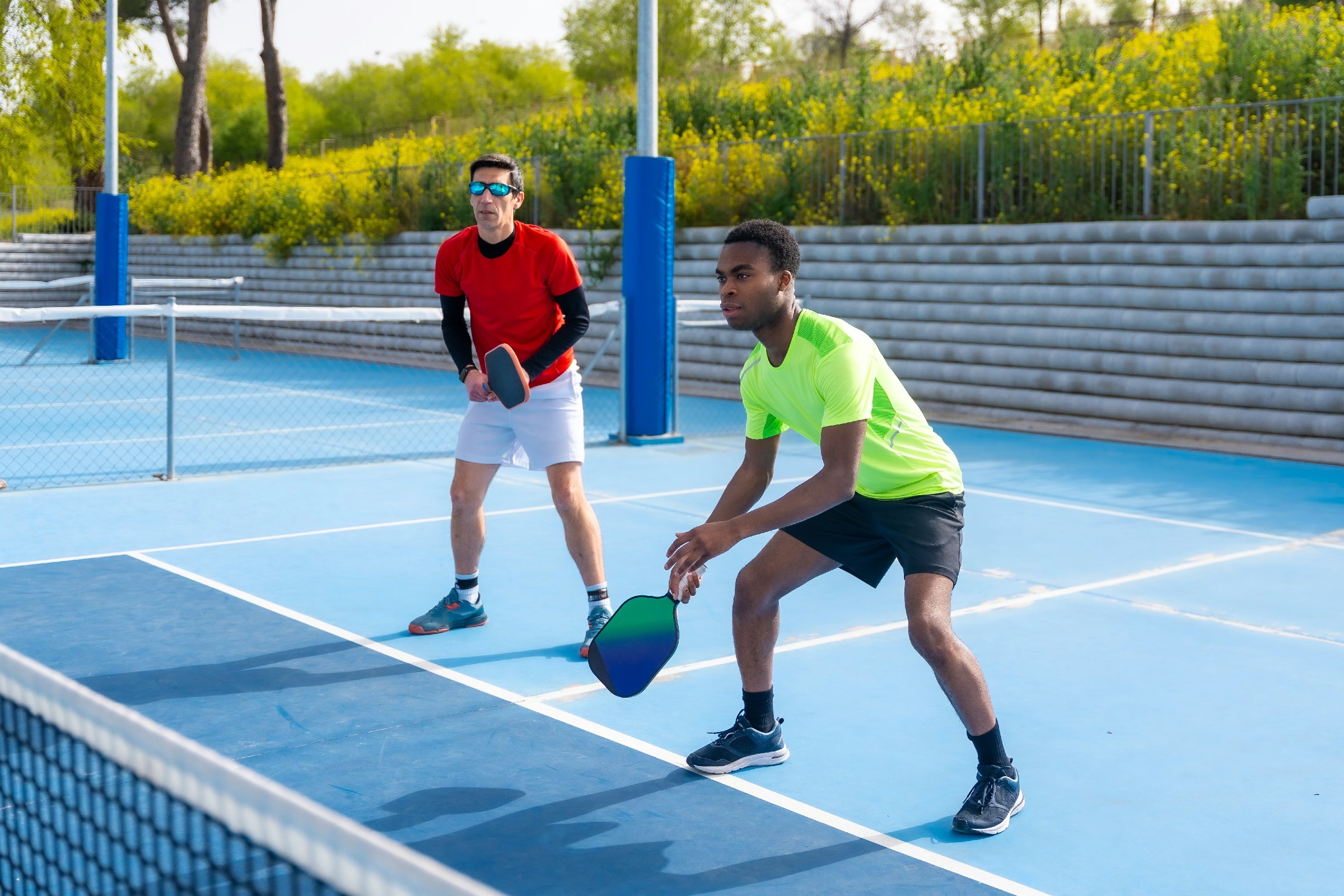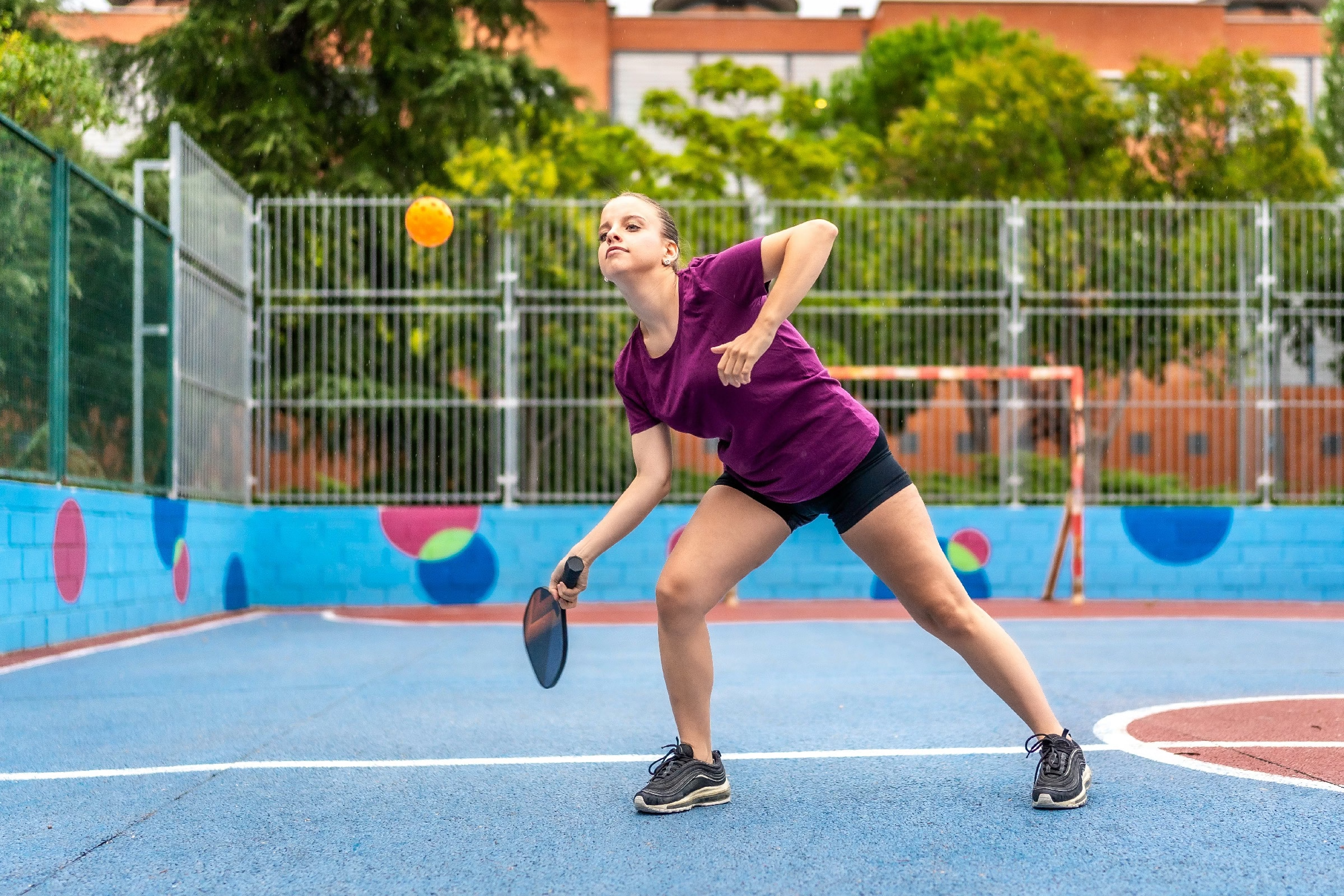Blog
are fiberglass or graphite pickleball paddles better

In the vibrant world of pickleball, where swift volleys and strategic plays create a dance of athleticism, the choice of equipment can substantially influence performance. Among the myriad of paddle options available, fiberglass and graphite emerge as two of the most popular materials, each boasting unique characteristics and advantages. As players take to the court, the debate rages on: which material reigns supreme in the quest for the perfect pickleball paddle? In this article, we’ll delve into the heart of the matter, exploring the distinct traits of fiberglass and graphite paddles, examining factors such as power, control, durability, and feel. Whether you’re a seasoned pro or a newcomer just starting out, understanding the nuances of these materials will empower you to make an informed choice, enhancing your game and enjoyment on the court.Join us as we break down the details that define your pickleball experience!
Table of Contents
- understanding the Composition of Fiberglass and Graphite Paddles
- Performance Comparison: power and Control in Gameplay
- The Weight Factor: Balancing Speed and Stability
- Durability and Maintenance: Which Material Lasts Longer?
- Price Points and Value: Making a Wise Investment
- Choosing the Right Paddle: Tailoring Your Decision to Skill Level and Playing Style
- Q&A
- The Conclusion
Understanding the Composition of Fiberglass and Graphite Paddles
When it comes to pickleball paddles, the materials used in their construction significantly influence performance and playability. Fiberglass paddles are known for their versatility and durability. This composite material provides a good balance between weight and strength, allowing players to generate power without sacrificing control. The texture of fiberglass can also enhance grip on the ball, making it a favored choice for many recreational players who enjoy a forgiving surface that aids in ball placement.
Conversely,graphite paddles are touted for their lightweight and stiff characteristics. Graphite, being a strong material, offers maximum responsiveness, translating into swift reactions and precise ball placement. The construction allows for exceptional vibration dampening,which can be especially beneficial for players with slight arm discomfort. This makes graphite paddles popular among advanced players who favor speed and agility in their game while still wanting a paddle that can handle powerful shots and give strong feedback.
| Feature | fiberglass Paddles | Graphite Paddles |
|---|---|---|
| Weight | Moderate | Lightweight |
| Durability | High | Moderate to High |
| Control | Excellent | Superior |
| Power Generation | Good | Great |
Performance Comparison: power and Control in Gameplay
When it comes to pickleball paddles, the duel between fiberglass and graphite often comes down to one’s playing style and preferences. Players seeking maximum power may find fiberglass paddles beneficial due to their inherent flexibility. The unique construction allows for a larger sweet spot, which can translate to greater energy transfer during gameplay. This often results in a high-speed game,ideal for aggressive players looking to send the ball flying across the court.
On the other hand, players who lean toward precision and control might prefer graphite paddles. Graphite is a dense material that provides a sturdier feel, enabling more accurate ball placement and refined shot-making. This makes them excellent for strategic plays, where the finesse in control outweighs the raw power of a shot.Moreover,the lightweight nature of graphite paddles can reduce fatigue during long matches while still offering exquisite handling.
It’s essential to consider the overall characteristics of each paddle type to understand their impact on gameplay. Here’s a table summarizing the essential differences:
| Feature | Fiberglass Paddles | Graphite paddles |
|---|---|---|
| Power | Higher power potential | Moderate power |
| control | Less control | Excellent control |
| Weight | Generally heavier | Lighter and easier to maneuver |
| Durability | Good durability | Highly durable |
Ultimately, the choice between fiberglass and graphite paddles hinges on individual style. Players looking to elevate their game should carefully assess how each material affects their performance both in terms of power and control. Whether your preference is a heavy hitter or a precision strategist, understanding the nuances of these materials will serve as a vital component in paddle selection.
The Weight factor: Balancing Speed and Stability
When comparing fiberglass and graphite pickleball paddles, one of the primary considerations is the weight of each material, which significantly influences both speed and stability during gameplay. Fiberglass paddles are typically heavier than their graphite counterparts, which can translate into enhanced stability as they allow players to maintain better control over their shots, especially during intense rallies. However, this added weight can slow down reaction times, demanding a more deliberate approach to play.
On the other hand, graphite paddles are known for their lightweight nature, enabling quicker maneuvers and faster swings. This agility can be a game-changer, notably for players who thrive on speed and agility, allowing them to respond to opponents’ shots with precision and rapidity. Nevertheless, the lightweight design may compromise some stability, making it slightly more challenging to manage power shots or aggressive plays from opponents.
Ultimately, the choice between fiberglass and graphite paddles depends on individual playing style and preferences. Players seeking a balance might consider paddles that combine both materials,leveraging the strengths of each. Below is a comparison table summarizing the key characteristics of fiberglass and graphite paddles:
| Feature | Fiberglass Paddles | graphite Paddles |
|---|---|---|
| Weight | Heavier | Lighter |
| Speed | Moderate | Fast |
| Control | High | Moderate |
| Durability | Good | Excellent |
| Cost | Generally Lower | Typically Higher |
Durability and Maintenance: Which Material Lasts Longer?
When it comes to durability, both fiberglass and graphite pickleball paddles have their strengths, yet they cater to different preferences. fiberglass paddles are known for their resilience and flexibility.They typically feature a tougher surface that can withstand the wear and tear of regular play. This durability means they are less likely to chip or crack during competitive games. In contrast, graphite paddles are lightweight and offer a stiffer construction, which can lead to a quick deterioration if not cared for properly. Their lightweight nature makes them more prone to damage from notable impacts,although they typically offer superior control and precision.
Maintenance plays a crucial role in the longevity of any paddle. Fiberglass versions require minimal upkeep, often just a gentle wipe-down after play to keep the surface clean. With their robust build, they can manage rough play without requiring frequent replacements. On the other hand, graphite paddles might necessitate more careful handling. Players are advised to avoid exposing them to moisture and excessive heat, which can compromise their structure over time. Proper storage and occasional inspection for surface wear can greatly extend their lifespan.
| material | durability | Maintenance | Typical Lifespan |
|---|---|---|---|
| Fiberglass | high | Low | 3-5 years |
| Graphite | Moderate | Moderate | 2-4 years |
Price Points and Value: Making a Wise investment
When delving into the world of pickleball paddles, understanding price points is crucial for making a wise investment. Fiberglass paddles generally fall within a moderate price range,offering an excellent balance between performance and cost. These paddles are an ideal choice for recreational players looking for quality without breaking the bank. On the other hand, graphite paddles often command a higher price due to their superior construction and performance capabilities. Consequently, players seeking a competitive edge might find that the investment in a graphite paddle pays off in the long run.
In considering value, it’s essential to weigh not just the initial purchase price but also the paddle’s longevity and playability. Fiberglass paddles provide excellent durability, making them a solid choice for casual or beginner players, while their price point allows for easy replacement if necessary. in contrast, graphite paddles tend to maintain their quality over time, enabling advanced players to execute more precise shots and maintain consistency during gameplay. When deciding between the two, players should assess their frequency of play and the level of competition they plan to engage in.
| Paddle Type | Average Price | Durability | Best For |
|---|---|---|---|
| Fiberglass | $50 – $100 | High | Recreational Players |
| Graphite | $100 – $200+ | Very High | Competitive Players |
Ultimately, the choice between fiberglass and graphite paddles hinges on individual preferences and playing styles. Players should contemplate their commitment to the sport and evaluate how much they value factors such as weight, feel, and control. By aligning these considerations with their budget, players can determine which paddle represents the best value and performance for their unique needs. With either option, investing thoughtfully in a paddle will enhance the overall enjoyment and skill development in the game of pickleball.
Choosing the Right paddle: Tailoring Your Decision to Skill Level and Playing Style
When selecting between fiberglass and graphite paddles, it’s essential to consider your current skill level. Beginner players may benefit more from fiberglass paddles, which offer a larger sweet spot and more forgiveness on off-center hits.these paddles are typically heavier, which can definitely help with stability and control for those still mastering their swing. on the other hand, advanced players often prefer graphite paddles for their lightweight construction, enabling quicker reactions and powerful strokes due to their reduced drag.
Your playing style should also heavily influence your choice. If you are an aggressive player who values speed and finesse,a graphite paddle may serve you better. Its rigid surface allows for more direct energy transfer, enhancing spin and control.Alternatively,if you typically engage in longer rallies and prefer defensive play,fiberglass may be the more suitable option. The added weight can provide the stability you need to respond effectively without sacrificing power.
| Player Type | Preferred Paddle Material | Key Benefits |
|---|---|---|
| Beginner | Fiberglass | Forgiving larger sweet spot, enhanced stability |
| Advanced | Graphite | Lightweight, improved spin and control |
| Aggressive | Graphite | Quick reactions, powerful strokes |
| Defensive | Fiberglass | Enhanced stability for long rallies |
Q&A
Q&A: Are Fiberglass or Graphite Pickleball Paddles Better?
Q1: What are the main differences between fiberglass and graphite pickleball paddles?
A1: Fiberglass paddles are crafted from a composite material that is typically lighter and provides a larger sweet spot, making them more forgiving for players learning the ropes. They tend to have a softer feel,which can enhance touch shots. Conversely,graphite paddles boast a stiffer surface,delivering powerful shots with less effort. This stiffness can translate into greater control, especially for experienced players who can harness that energy.
Q2: How does the material affect performance on the court?
A2: The performance largely hinges on your playing style. Fiberglass paddles are ideal for players who prioritize finesse and control, particularly at the net, as they can absorb some shock on impact. Graphite paddles, on the other hand, create a crisp response and a punchier ball, making them a favorite among aggressive players who enjoy power and speed in their game.
Q3: Are there any weight differences between the two materials?
A3: Yes, weight is a notable factor! Fiberglass paddles often weigh slightly more than their graphite counterparts, but the difference can be minimal. Lighter paddles (often made from graphite) allow for quicker hand movements and easier reactions, which can be pivotal in fast-paced exchanges. Heavier paddles may offer more stability but can tire out the arm over lengthy matches.
Q4: Which material is more durable?
A4: Durability can vary based on brand and construction, but generally, graphite tends to be more robust against wear and tear compared to fiberglass. However, higher-quality fiberglass paddles can still hold up well over time. If you’re a frequent player or a tournament participant, investing in a durable paddle is wise nonetheless of the material—just be sure to check reviews!
Q5: What about price? Is one material typically cheaper?
A5: Pricing can fluctuate across brands, but it’s common to see fiberglass paddles priced lower than graphite ones. This is due to the cost of materials and manufacturing processes. For beginners or those on a budget, fiberglass offers a solid starting point.Though, if you’re committed to the game and looking to hone your skills, the investment in a graphite paddle for enhanced performance could pay off in the long run.
Q6: Are there specific player types that should choose fiberglass or graphite?
A6: Absolutely! Fiberglass paddles are often better suited for beginners or recreational players who appreciate a softer impact and have a focus on control. Graphite paddles, however, might attract intermediate to advanced players who desire precision and the ability to generate power with timely swings. Ultimately, the best choice also depends on your unique playing style and comfort level.
Q7: Can my preference change over time as I improve?
A7: Definitely! As your skills evolve and you gain more playing experience, your paddle preference may shift. Beginners may start with fiberglass for confidence and control but might later opt for a graphite paddle to accompany their growing power and strategic gameplay. It’s all about finding what resonates with your current level and playing approach!
Q8: How can I decide which material is right for me?
A8: The optimal choice hinges on testing various paddles. If you have access to a local club or store, trying both fiberglass and graphite options can be enlightening. Pay attention to how each material feels during play—do you prefer the control and softness of fiberglass or the firmness and responsiveness of graphite? Listening to your body and game preferences will guide you toward your ideal paddle!
The Conclusion
In the ever-evolving world of pickleball, the choice between fiberglass and graphite paddles may seem daunting, yet the answer lies in your individual playing style and preferences. as we’ve explored the strengths and nuances of each material, it’s clear that both fiberglass and graphite paddles offer unique benefits that can enhance your gameplay.
So, whether you lean towards the lightweight, quick-moving finesse of graphite or the robust, forgiving nature of fiberglass, the ultimate decision is yours to make. The best paddle is the one that feels right in your hands, resonates with your play, and elevates your game.
In the grand tapestry of pickleball, every player’s journey is distinct. Embrace the exploration, try out different options, and discover what makes your heart race and your game shine. After all, it’s not just about the paddle; it’s about the joy of play.Happy picking!












